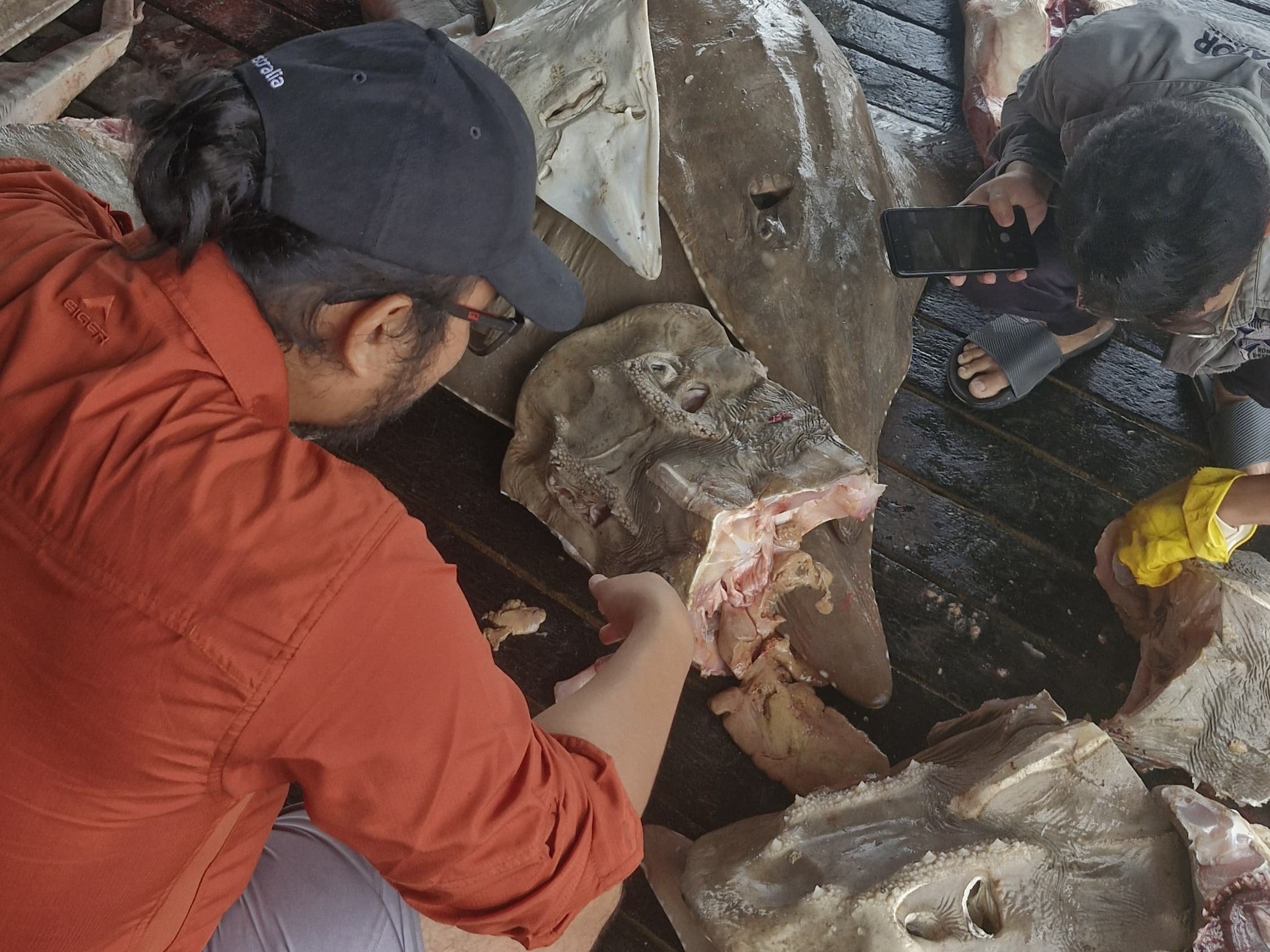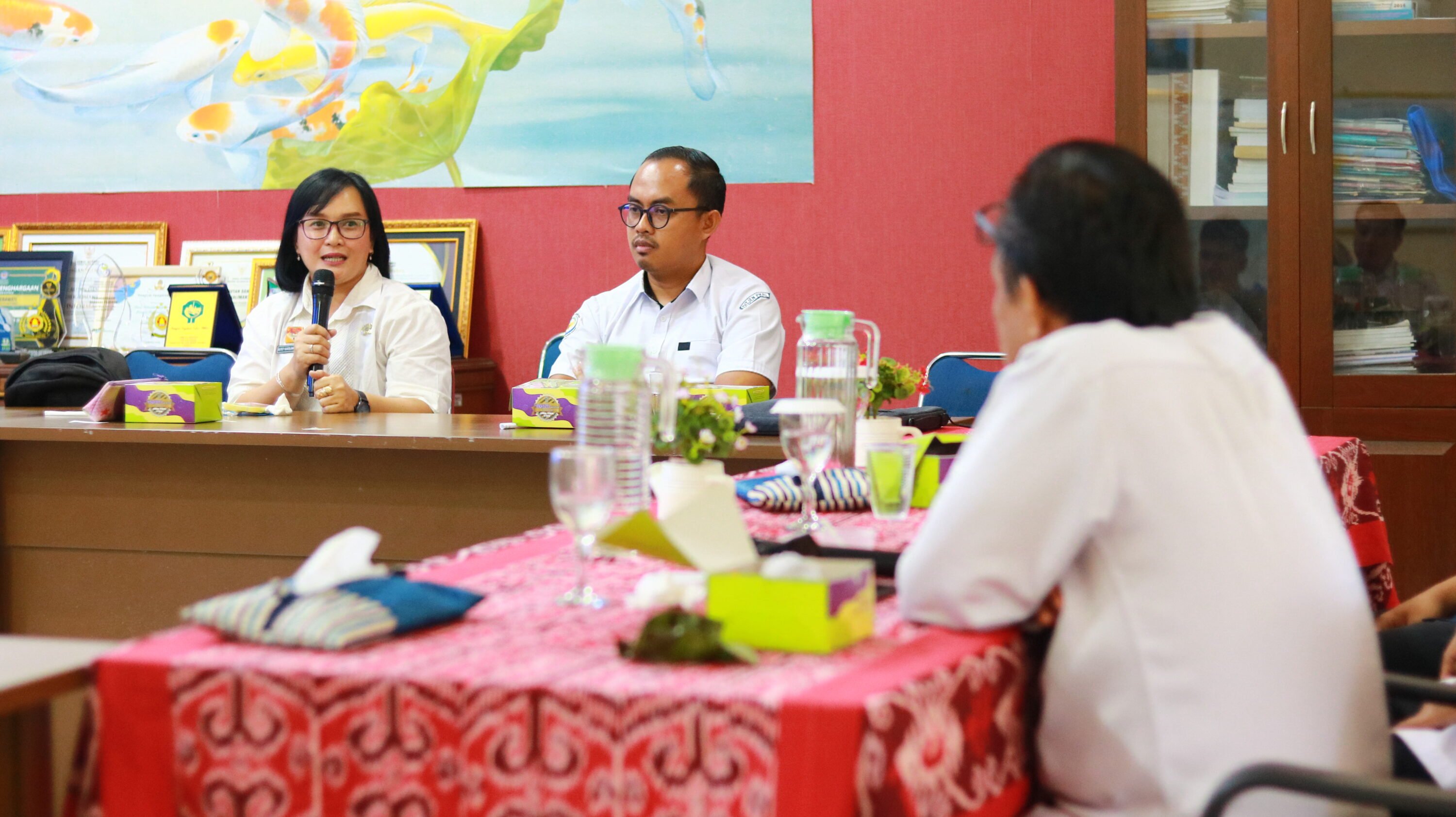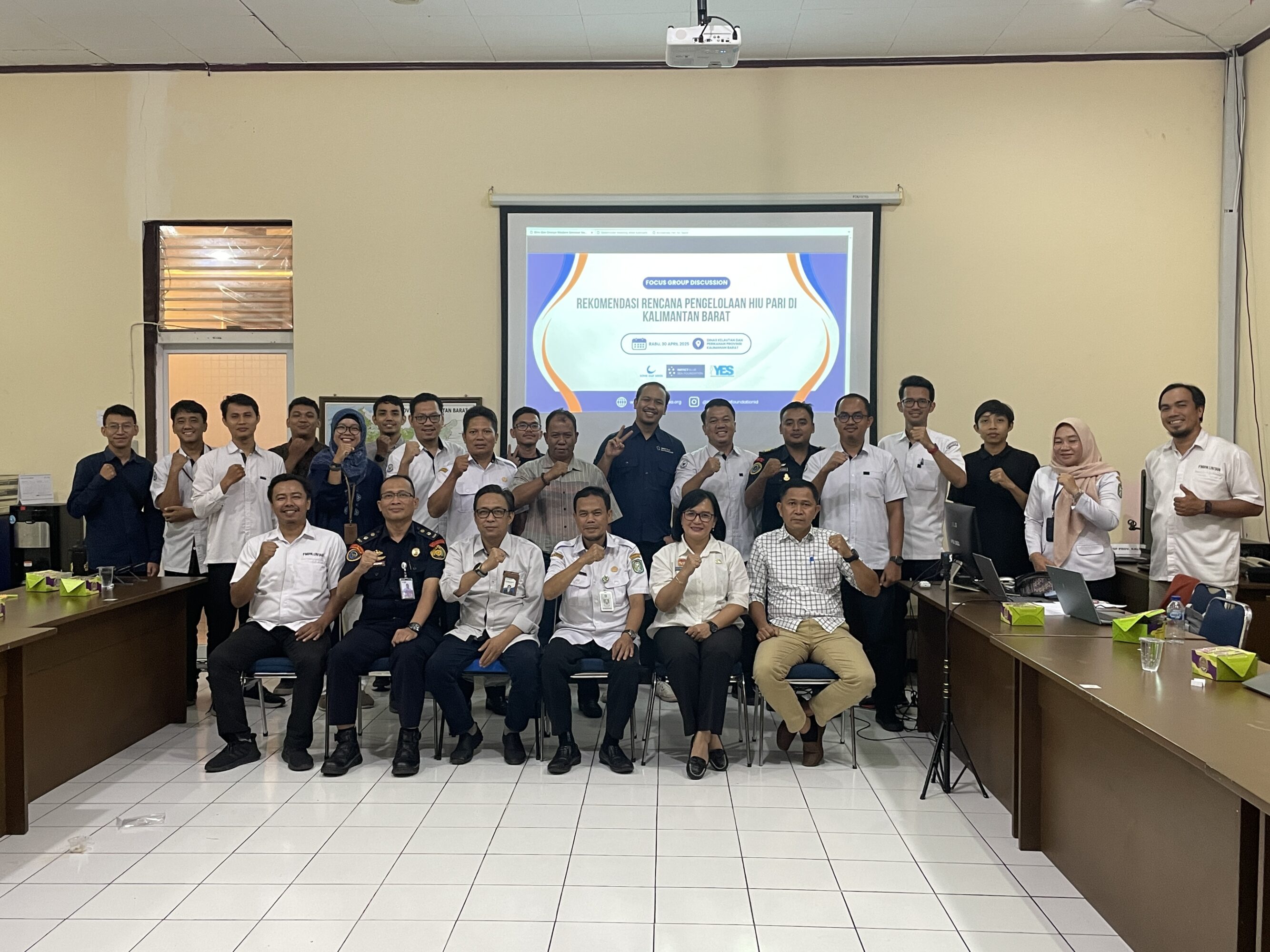The first-ever shark and ray stakeholder workshop in West Kalimantan
When we heard about Borneo or Kalimantan, most of us wondered about the lust rainforest, mighty rivers, and orangutans hanging around the trees. Little did we know that this island has so much more in its treasure vault: the biodiversity and richness of its aquatic species.
This island is a hotspot for some of the most endangered sharks and rays on the planet, from critically endangered rhinorays to elusive freshwater sharks and rays.
Sadly, not many local communities, students, and even scientists are aware of the richness and anthropogenic threats to these species’ survival. Just on the outskirts of the Pontianak, the capital of West Kalimantan, there is a centre of demersal ray fisheries. About seven warehouses in Kapuas Riverside land hundreds of wedgefish, guitarfish and many other rare species monthly. According to BPSPL Pontianak, ray landing in this small town called Sungai Kakap was as many as 36.707 individuals in 20181,2.
In 2024, I started my SOSF Journey as PhD student studying wedgefish biology and population genetics in the Indo-Pacific region, with one of my main sites located in Sungai Kakap. For 12 months, we diligently collected fisheries, reproduction and diet information of wedgefish that landed in Sungai Kakap. This project aims to understand this species more and hopefully contribute to better management in West Kalimantan and Indonesia.

Muhammad Ichsan conducted his data collection in Sungai Kakap. Photo © Muhammad Fauzi | Impact Blue Sea Foundation
At the end of this project, while compiling and analysing research data, we held the first-ever shark and ray provincial stakeholder meeting in Pontianak. This workshop aims to gather stakeholders and discuss what we know and what needs to be done. This workshop was attended by provincial and district fisheries and marine agencies (DKP), National Research and Innovation Agency (BRIN), Ministry Management Unit (BPSPL Pontianak), Ministry Surveillance Unit (PSDKP), local NGOs (Yayasan Konservasi Indonesia, Impact Blue Sea Foundation and Freshwater Fish of Indonesia) and academic institution (Universitas Tanjungpura).

Attendees of the workshop. Photo © Tia Shafira Shalsabila | Impact Blue Sea Foundation
In this workshop, we discuss the state of shark and ray biology, ecology, social economy, and utilisation in the province. We also have a special session that focuses on wedgefish and freshwater stingrays. These two groups of species need more attention due to their level of protection and utilisation in West Kalimantan. In terms of their status, wedgefish are Critically Endangered; however, they still can be utilised and traded. With the alarming rate of current exploitation in West Kalimantan, this group of species needs better management. For freshwater stingrays, although they are fully protected, there are still utilisations such as domestic consumption and live animal trade that happened due to bycatch, minimum surveillance and law enforcement also low awareness of communities on the status of these species.

Discussing future management of sharks and rays in West Kalimantan. Photo © Tia Shafira Shalsabila | Impact Blue Sea Foundation
From the workshop, there are three main points that we agreed to focus on: Firstly, improving research that will help us understand more about species distribution, biology, and vulnerability to threats. Then, we need to strengthen monitoring and surveillance. Monitoring fisheries gives us a clue on how much restriction we need to put in place to safeguard species’ populations and improving surveillance can help us avoid unwanted utilisation of fully protected species such as freshwater stingrays. Lastly, raising awareness and developing alternative livelihoods for local communities, especially the ones that highly depend on sharks and rays as their source of income.
**References
- BPSPL Pontianak. (2022). Laporan Monitoring dan Pendataan Hiu dan Pari di Kalimantan Barat (p. 153). BPSPL Pontianak.
- Yogi, F., Mulyadi, A., & Hadinata, F. W. (2025). Pola pertumbuhan dan faktor kondisi ikan pari kemejan (Rhynchobatus springeri) yang didaratkan di Pangkalan Pendaratan Ikan (PPI) Sungai Kakap, Kabupaten Kuburaya.
